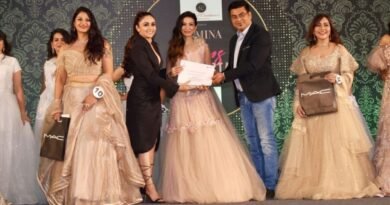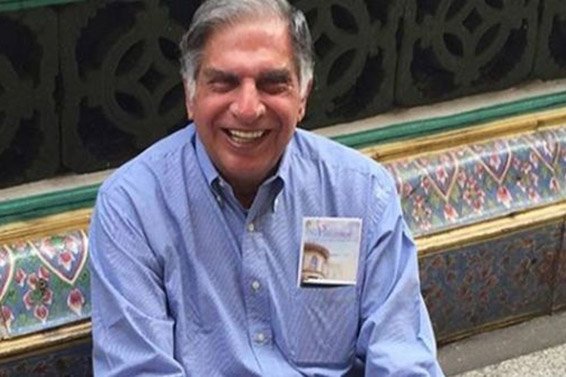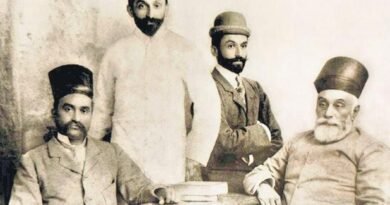The incredible history of the traditional Parsi Gara sari
From the quirky motifs hidden in the sari to its genesis, Ashdeen Lilaowala breaks down the nuances of a traditional Parsi Gara

The timeless elegance of a traditional Parsi Gara is undeniable. Embroidered to life with photorealistic precision, the Gara sari is a unique member in the exhaustive variety of crafts found in the country. Predominantly worn by the Parsi community during weddings and special occasions, the exquisite Gara sari deserves not to be stashed away just for those big days. Vogue spoke to Ashdeen Lilaowala—one of the few creative minds carrying the legacy of the Gara forward—about the history of the embroidery, its evolution and the lesser known facts.
Tell us about the origins of Gara
Gara embroidery came into our design lexicon at a time when the Parsis from India would travel to China for trade. They carried opium and cotton with them from India, which was bartered for tea in China. Tea as a commodity was gaining a lot of popularity in Europe and the British wanted to sell more tea in Europe. The Parsis quickly became rich trading with the British.
When they came back on their ships, they also brought back ceramics and various other antiques that were available in China. Legend says that one of the traders brought back a new kind of artistic embroidery, which was very realistic in its depiction of flora and fauna and was targeted to the European market. Eventually, it was commissioned as a five-and-a-half-metre sari for the traders from India. Earlier, the pieces that came in were fully embroidered, corner to corner, but then slowly the women started travelling to China too, and they edited them to have borders, blank spaces for tucking in, etc. The Parsi community had newly settled in Bombay, become quite rich, and now wanted a certain new look—and they adopted the Gara saris as their signature.
One of the famous designs was ‘Cheena Cheeni’, which depicts a Chinese man and a Chinese woman against a landscape of pagodas, bridges, plantations and people doing daily chores in China, carrying lanterns and other knick knacks—but these were things so exotic and unseen in India, that the design became a prized possession. They also brought back narrow borders that are called as ‘Kor’, and clothes for the children—the tunics were called ‘Jhablas’ and pants were called ‘Ghicha’. These were some of the different products that were coming via the trade.
Can you tell us a little more about other popular Gara designs?
We have quirky names for motifs. Apart from ‘Cheena Cheeni’, there is a polka-dotted motif is called ‘kaanda papeta’, which stands for onion potato. Polka dots were so common at one point, that they were jestingly compared to onions and potatoes for how readily available they were. Then there is a spin wheel motif, which the Parsis call a ‘Karoliya’, or a spider. We have a ‘Marga Margi’, which is a rooster and a hen and there’s a ‘Chakla Chakli’ too, which is a male and female sparrow.
During a research exercise, we found that there is a kind of rock formation on the sari that usually comes with a peacock perched on it—the motif is called ‘The Divine Fungus’. But when you tell a Parsi woman that there’s fungus on your sari, they (naturally!) don’t take it well. And we have seen borders with exquisitely embroidered bats as well. Indians are not fond of bats, and for Parsis, bats are equivalent to death—I’ve actually had customers tell me they’re not wearing the pieces again once I confirmed the embroidery denotes a bat, and not a butterfly, as they originally thought. We also have a sari in our recent collection called ‘Morning Glory’—it has a sun and a huge spread of birds, flora and fauna, so it is like a whole narrative about the sun being the element that manifests this abundance of flora.
How long does it take to make a Gara sari?
Depending on the density of the work, it can take anything from three weeks to two months. And when I say two months, I mean six to eight people working on one sari together.
What is the base fabric of the sari?
Even though the sari is covered in silk thread embroidery all over, it has a nice flow to it and can be draped well. The original fabric was called ‘Sali Ghaj’, which has very thin lines running through it.
Garas went out of fashion in the ’30s and were only revived in the ’80s. In Mumbai, they started using this thick fabric—Shamu satin and thick Crepe d Chine back then. Presently, we largely use crepe, but not georgette or chiffon—because the silk thread is hand-embroidered and these fabrics can’t take the weight of the embroidery.
You mentioned that the Garas went out of fashion. What do you think was the reason behind that?
One of the main reasons was that India had stopped trading opium with China. And then the Independence movement followed. Gandhi was asking people to shed these foreign textiles and wear khadi. I think when a trend has been around for 40-50 years, people eventually get bored with it. So they started wearing chiffon and georgette saris, because those fabrics were new at the time. Then, we were at war with China, which had become a Communist country by then, and at that time trade completely stopped.
What replaced the Gara for the Parsi women in that time?
Many women were wearing the georgette and chiffon that was being brought in from abroad, but the borders, which were attached, pretty much ran through and through over the years. Heavy Garas were saved for functions and occasions. In the ’60s and ’70s, there were saris made from glass nylon with sequin work on it—that was the popular look then.
You are one of the very few people who still does this. How do you keep challenging yourself?
For us, the biggest challenge was that we had the same inspiration as the original saris—there are lots of flowers and birds. It was then that we realised that we need to find distant points of interest. One of our collections was inspired by ceramics that came from the trade. The idea was to take the same motif and explore it on different fabrics. We did collections where we embroidered on net, and introduced different threads and materials. We use a lot of zari thread too, where we create the entire embroidery with the zari rather than just using it as an accent. You have to take elements and play with them—blow them up, reduce them, make them more graphic or modern, and churn out new collections each season.
But we also realise that our product is not seasonal. At the end of the day, it is something very classic, and can make for an heirloom that is handed down from a mother to her daughter. Once you have it in your wardrobe, you can wear it across seasons. In a sense it’s like a Kanjeevaram—it never goes out of fashion.
Are your artisans primarily people who have been doing this for years, or have you trained new people?
We have close to 140 people doing embroidery for us, but it isn’t necessary that they came in knowing Parsi embroidery. We have to push them and train them to make them realise the certain nuances of our craft. When we do birds in our embroidery, it’s not abstract, it has to be realistic—how the feathers move, how the beak is, how the eyes are. So that kind of training, how to mix colour, how to do shading so that it looks more realistic and lifelike, is needed. But they already know the technique of embroidery—in India that’s our biggest forte.
You maintain a good bank of your own culture’s history. What are some of your reference points?
Before I delved into starting my own label, I had researched Parsi embroidery extensively. I travelled to China and Iran, tried to find the routes and roots, see what the links are, what are the meanings of the motifs, and things like that. I have travelled across India and met various Parsi families, and I have a good bank of Garas that we have documented. We know the references quite well, but every now and then you get a new piece that makes you go,“wow, where did this come from?”. And considering I’ve been doing this for six years, people approach me themselves now. Also, when I travel to museums, I request to look into their archives—all of this becomes the starting point to a new collection.
How do you reach the younger customers?
I think with social media, you can share information in bits and pieces. You don’t have to write a thesis or go through a long, boring read—that way it’s very encouraging. I had recently posted items from our archive, like an old border, Gara and a jhabla, where we spoke about the relevance of those motifs in the caption—and that post did really well on Instagram.
There’s definitely an interest and a certain kind of excitement in the younger generation. We get a lot of young girls who now say that we want a Gara in our trousseau. There are many non-Parsi girls who are marrying a Parsi groom, or a Parsi girl marrying a non-Parsi boy, so they want to wear a lehenga with Parsi embroidery. We are adapting our technique into a modern context, and have been getting a number of enquiries from a much younger audience.
Scroll ahead to take a look at a few examples of Gara embroidery.









